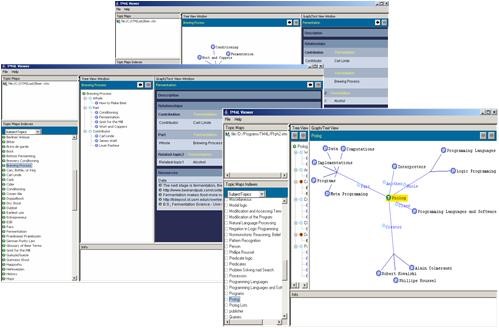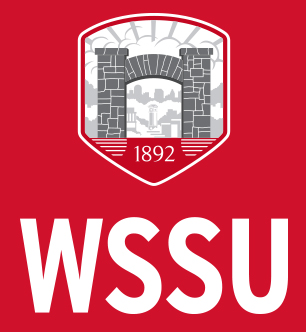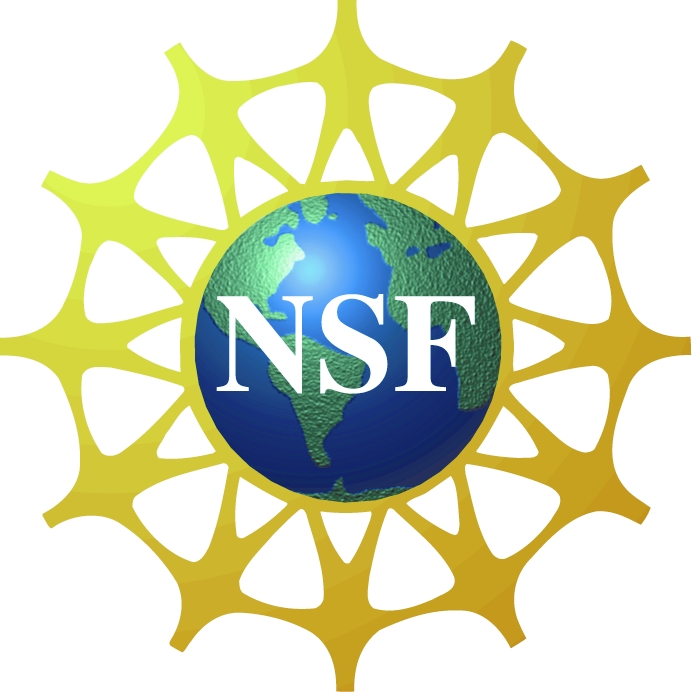TM4L Viewer
We consider the exploration practice as the process of finding information that is relevant to the learner’s current tasks. There is a tendency towards browsing in terms of exploration, and the TM4L Viewer should therefore be enhanced to better support both browsing and the combination of search and browse activities. The exploration practice differs from information querying in that no specific question needs to be answered. Instead, the user/learner wants to know about relevant information at a more global level, e.g. to see what information is available in terms of their current information needs. Exploration also differs from general analysis in that the issue is not to oversee the entire collection in a holistic way but only inspect those parts relevant to the learner’s current task. The exploration of large information spaces is a difficult task, especially if the user is not familiar with the terminology used to describe information. Conceptual models of a domain in terms of thesauri or ontologies can remedy this problem to some extent. Exploration on the level of concepts and relationships can be used as a navigation and query formulation mechanism fostering semantic exploration and discovery. In order such an ontological framework to be useful, there is a need for interactive tools for exploring large information sets based on conceptual knowledge.
Design Principles
By the term “informativeness” we refer to the extent and type of information that the concept structure should include in order to satisfy the information needs of the envisaged learners. In this respect, we consider a concept structure as informative if it provides a representation of the properties of the involved concepts along with the relations between concepts that is at an appropriate level for the learners to understand. The predefined relation types for our purposes were selected on the basis of pragmatic considerations. A key consideration was the information overload, related to both the amount of information provided and the ability to process it. In particular, information overload can result from a concept structure that is too complex (in terms of relations among the concepts), or from a non-carefully designed graphical user interface. The set of relation types included as predefined relations was selected partially on the basis of the expected background of our envisaged users. It is relatively small but can be extended with arbitrary number of associations based on the TM standard. Three of the hierarchical relations are the most commonly studied and used semantic relations (although slightly adapted to our purposes), “superclass-subclass”, “whole-part” and “class-instance”; the other relation types have been selected especially for capturing concept structures typical in the intended domain: “related-to” and “similar-to”. The additional factors that have influenced our visualization strategy include:
- Target User Group: e.g. students/ learners.
- Intended Use: e.g. exploring, searching, comparing, making a decision for relevance, extracting information, etc.
- Type of Information to be Displayed: e.g. graph structures, tree structures, lists, text, documents, links, etc.
- Technical Constraints.
These observations suggested in turn the following guiding principles with respect to the TM4L Viewer design:
- Design an information space that offers the learner an ontologically rich representation of information based on different information sources in an integrated fashion.
- Offer personalized support for users with different skills and different information needs.
- Design an easy to use system that supports the learner’s exploration in an effective and efficient manner.
Views
To enable multi-purpose exploration TM4L supports multiple views. Interfaces that provide multiple views offer users different perspectives on a selected entity. TM4L visualization strategy is to provide view on demand. TM4L has been developed as a general information course-task support tool. Therefore, it has a general user interface, not dependent on a specific knowledge area. The goal is to provide an intuitive graphical interface for Topic Map-based learning content navigation. Three views are currently supported by the Viewer: Graph View, Tree View, and Text View. These views are intended to ease navigation at “hot spots”. The graph view includes a semantically expressive, browsable graph (based on HyperGraph) (see Figure 2).

Figure 2. Screenshots from the TM4L Viewer interface.
The interface allows browsing all the topics and relationships defined in the Topic Map as well as filtering some views with respect to selected topic types or relationships. The visual display is not intended to convey the full richness of a TM-based repository, but to show which topics are present and how are they related. Aiming at reducing the information overload, we have chosen at each navigation step to display only the topics most immediately related to the currently selected object. In addition, we have chosen not to show the resources associated with the displayed topics in the Graph view, since the visualization becomes too crowded and unclear. Thus the Graph view represents only ‘ontology’ objects - topics, relationships, roles (the latter can be also hidden) but not resources.
Perspectives
The TM4L Viewer supports this by offering six corresponding indexes. These indexes provide the starting point for browsing the Topic Map. When the user selects in an index a particular object (topic, relationship, etc.), it becomes the “focus” object and will be displayed in the “Tree View” and “Graph/Text View” panels of the Viewer’s window. The view in each panel can be changed to any of the other two. The user can continue browsing the learning content by selecting an object related to the currently displayed one. When navigating, the user can choose in which panel the information about the selected topic is to be displayed. This allows browsing different objects related to the current one without loosing the focus. By exploring the graph in a particular direction the user can obtain a better understanding of its content and thus decide what portion of the repository is relevant to their needs.
The following are additional options provided by the TM4L Viewer:
- Visualization manipulation: The users can move, resize, and change the topological structure of the graph according to their needs.
- Graphical selection: The selection of a single topic at a time from the graph/text/tree view allows the user to select an object for expansion and thus to select a particular direction for exploration of the Topic Map. By selecting a new object from the Topic Map index it is possible to select a new starting point for exploration.
- Context representation: Context/theme filters can be applied to the content shown in the Viewer. Every topic characteristic may have a scope, which is specified explicitly, as a set of themes. A theme is a topic that is used to limit the validity of a set of topics and relations. The objects that are not valid in the specified theme are filtered out.
- Highlighting: whenever an element of the visualization is selected it is highlighted showing the current context.
This material is based upon work supported by the National Science Foundation under Grant No.0333069. Any opinions, findings, and conclusions or recommendations expressed in this material are those of the author(s) and do not necessarily reflect the views of the National Science Foundation.

